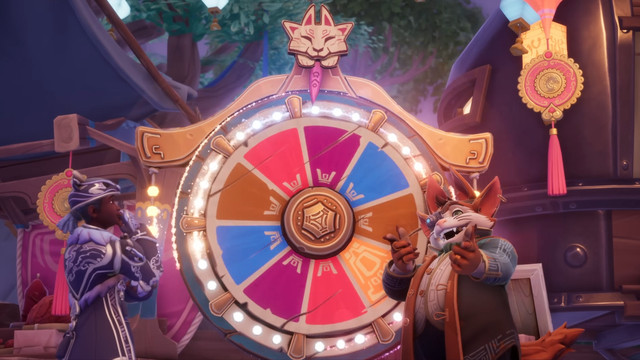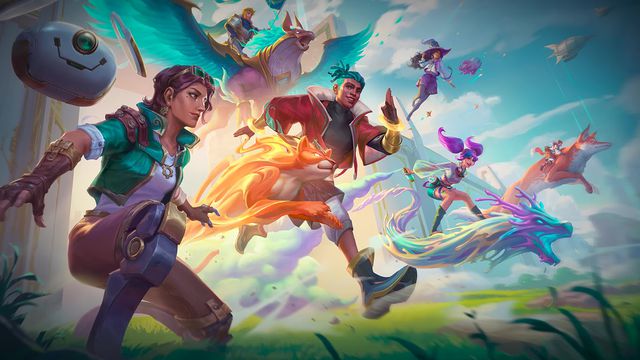FLCL Grunge premieres September 9 on Adult Swim.
If you watched the six-episode anime FLCL during its 2003 run (or many, many subsequent reruns) on Adult Swim, chances are you weren’t considering its franchise potential. You were probably more preoccupied with its unhinged style of storytelling, which approaches teenage ennui and burgeoning sexuality with a cartoon energy that still leaves space for introspection and beauty. You might have ruminated on its excellent rock soundtrack by The Pillows, or on the character of Haruko Haruhara (Kari Wahlgren), the pink-haired agent of chaos who rides a yellow Vespa and swings an electric guitar like a club. You certainly wouldn’t have considered that, 20 years later, FLCL would be on its third sequel.
Yet here comes FLCL: Grunge, with CGI animation by MontBlanc Pictures and airing five years after two other Adult Swim-funded follow-ups, FLCL Progressive and FLCL Alternative. And while both of those seasons distinguished themselves by centering teenage girls, Grunge returns to FLCL’s preteen boy POV. The first episode does not, however, merely retread the original’s plot beats or even riff on them – instead, it abbreviates its protagonist’s arc as though playing on fast-forward. This approach suggests that the remainder of the season has something more up its sleeve, but after a premiere this aimless, it’s hard to imagine that anything amazing is going to happen here.
Our new POV character (and episode namesake) is Shinpachi (Casey Mongillo), first seen lounging in his room, listening to music on tape and staring at an object crossing the orange sky. The very picture of teenage ennui, he groans when his sushi-chef father (Arthur Romeo) calls him downstairs to make a delivery. As Shin steps outside to get on his scooter, he spots the diminutive mayor (Dino Andrade) jumping out of his limousine, and he especially notices the woman who emerges afterwards. We will later recognize her as Haruko, but in the moment, the camera mimics Shin’s POV and never shows her face, focusing instead on her legs and then on the bottom of her tight dress when she adjusts it. To visualize the effect on Shin and his hormones, his character model briefly transforms into a hyperactive 2D image before speeding away.
As artistic choices go, the intermittent 2D is a decent enough trick to sidestep the more rigid qualities of computer animation. Overall, the episode looks okay – the CGI does the job without being too distracting, though it’s tough to argue that it looks particularly good. That’s the trouble with following up a classic series like FLCL: Where the original built handsome animation around visual metaphor and wild imagination, the no-nonsense functionality of Grunge’s CGI is a disappointment by comparison. The biggest issue is less the characters than the lifelessness of the world they inhabit, with backgrounds that look designed to avoid calling attention to themselves.
The empty feeling is at least partly written into the story, with Shin giving a rather grim description of his hometown as somewhere that everyone has quite literally left behind. With the place overrun by flies and covered in smog from the nearby Medical Mechanica plant, people are leaving the planet in droves aboard daily space flights. He has only two classmates left: Orinoko (Michelle Marie), the daughter of a knife-maker, and Shonari (Luis Bermudez), an alien “Rockian” who subsists only on liquids and looks distractingly identical to The Thing from the Fantastic Four. (Shonari’s older, larger brother looks similar but has a darker complexion and wears a very loud shirt.) Even the fish that Shin and his father prepare look blackened and sickly – with its setting rendered in hazy colors, Grunge is FLCL reconfigured for a generation watching the world burn before their eyes.
In a more practical sense, the setting’s straightforward crumminess also serves the rapid pacing: When the characters’ discontent is so plainly visible, less time can be spent lingering on their internal struggles. And beyond a comic scene where Shonari shows up to dump some suspicious bags in the river while Shin is fishing, there’s simply not much time to get to know any of the characters. Haruko herself is operating mid-scheme, using the mayor as a means to an end, and she throws herself at Shin with little of the playful build-up that makes her feel like an animal toying with prey. Shin develops one of FLCL’s signature forehead protrusions, a robot appears, and the adults behave with selfish, useless abandon; the episode speeds through these points like a checklist that gives them an obligatory quality, like a groundwork of basic expectations to be fulfilled. That’s the funny thing about franchises – what once felt fresh goes on to become a mere signifier of brand continuity.
The episode takes an explosive turn once Haruko triggers the Medical Mechanica plant and faces down droves of gun-toting henchmen. It’s here that the passable CGI begins to feel rickety, combining jokey limited animation with interchangeable character models for a fight that only ends up reinforcing the airless quality of the art. But on the whole, the structural shakeup is at least intriguing – FLCL seasons unfold like monster-of-the-week stories in their early going, with these larger conflicts reserved for the later episodes. When Shin arrives, he even declares how much he’s changed, even though we’ve known the character for about 20 minutes. Perhaps that’s the hook of Grunge: a boy who prematurely believes he’s finished his coming-of-age story. After all, the action scene unfolds without any weird powers on Shin’s part; nothing has burst from his forehead, and he merely tosses biting fish at goons in his belief that he should protect Haruko.
Whatever the season has in store remains a mystery. There’s a momentary appearance by prominent season 1 character Amarao (now voiced by Aaron LaPlante) and his big eyebrows, and Haruko tells Shin that she has “finally found him,” but there are no hints on what’s to follow. This is largely a table-setting affair, which makes it a difficult first episode to get behind and an unconvincing proof of concept for any skeptics. Both Progressive and Alternative had much stronger starts with much clearer hooks, and Grunge is largely asking for a trust it has yet to earn. Closing out on a cliffhanger, the premiere essentially tables the debate over its necessity until next week.






